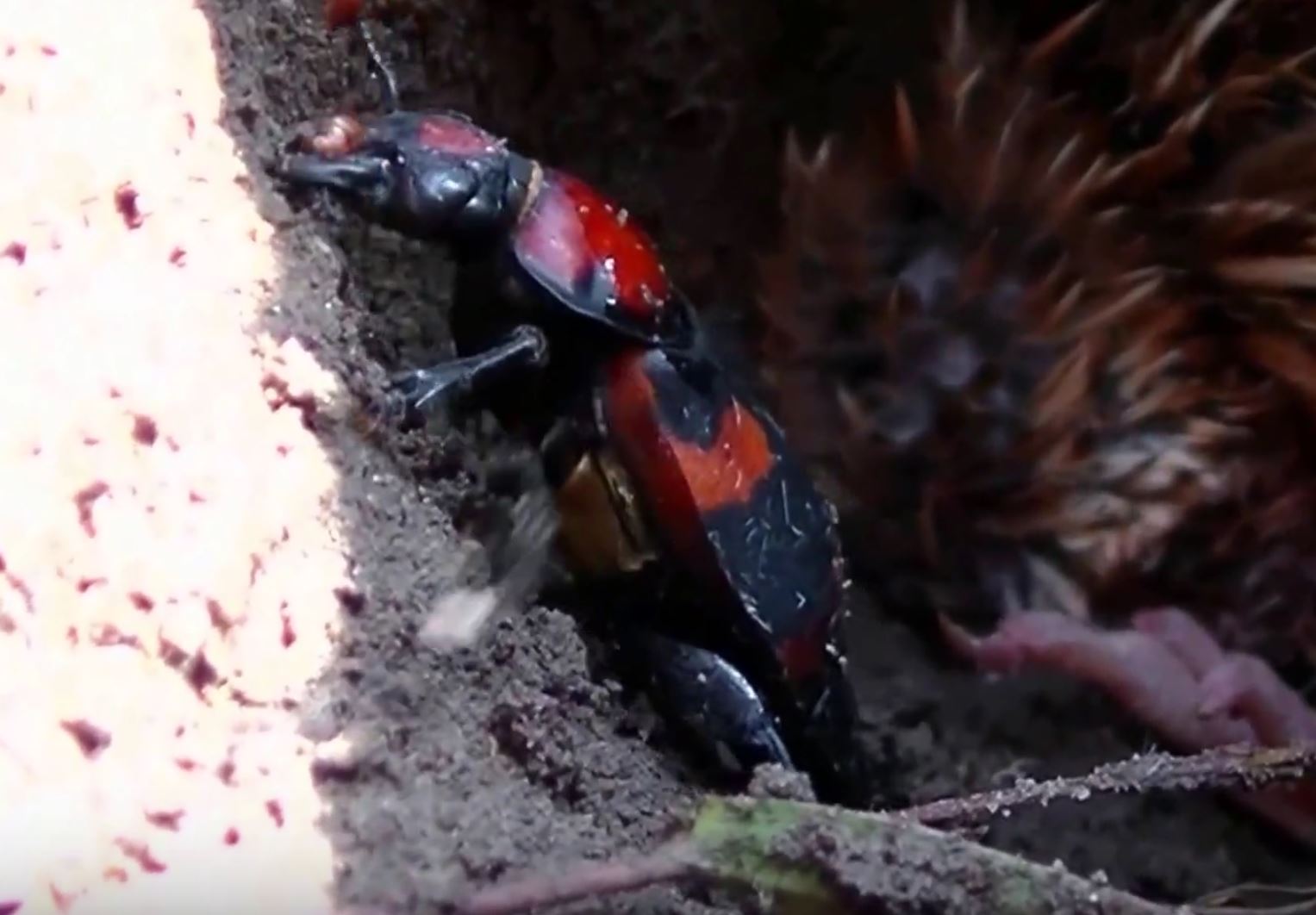North American wildlife is on the rise! The following was issued by the U.S. Fish and Wildlife Service on May 1, 2019:
The American burying beetle, one of nature’s most unique creatures, appears to be more plentiful, thanks in part to the efforts of a wide array of partners across its range. Following the beetle’s listing in 1989 as endangered under the Endangered Species Act (ESA), the U.S. Fish and Wildlife Service and stakeholders implemented conservation and recovery efforts, and now the Service is proposing to downlist it from endangered to threatened.
Although the beetle had a historic range covering 35 states plus the southern borders of three Canadian provinces, in 1989 it was known in only two locations – Oklahoma and Block Island, Rhode Island. There are now confirmed populations of the American burying beetle in nine states: Arkansas, Kansas, Nebraska, Oklahoma, South Dakota, and Texas, on Block Island off the coast of Rhode Island, and reintroduced populations on Nantucket Island off the coast of Massachusetts and in southwest Missouri.
Along with the proposal to downlist the species from endangered to threatened, the Service is proposing a rule under section 4(d) of the ESA that would tailor ESA protections to only those the beetle needs for recovery. The Service generally issues these rules to facilitate overall conservation of a species or to allow land use activities, where such activities are compatible with ongoing and future conservation and recovery efforts, to occur without need for ESA regulation. For example, the proposed 4(d) rule would exempt activities related to ranching and grazing in the American Northern Plains and New England analysis areas. These land uses generally support healthy habitat for American burying beetle populations.
“Working collaboratively for almost three decades with states, zoos, federal agencies, private landowners and others to conserve and recover the American burying beetle, we have made some positive steps forward and are now proposing to downlist the beetle,” said Service Southwest Regional Director Amy Lueders. “Conservation efforts for the beetle that involve managing native habitat, the use of prescribed fire and control of invasive species benefit other species including quail, migratory birds and white-tailed deer. With our partners, we will continue to work to improve the status of the beetle’s populations.”
The American burying beetle is a large shiny black beetle with hardened protective wing covers marked by two scalloped shaped orange patterns. The nocturnal beetle is active only in the summer and lives for only one year. They are scavengers that depend on carrion for their life cycle. The beetle buries a small carcass, lays eggs beside the carcass, and feeds the larvae from that carcass until they mature.
On August 18, 2015, the Service received a petition to delist the American burying beetle due to new information. On March 16, 2016, the Service announced that the petition was substantial and that we would initiate a status review of the species in order to make a 12-month finding. We evaluated the beetle’s status using our Species Status Assessment framework.
Efforts to monitor and conserve the species and its habitat will continue across federal, tribal, state and private lands. There are several large areas of protected habitat for the American burying beetle on Department of Defense lands, national wildlife refuges, national forests, state wildlife management areas, tribal lands and lands managed by The Nature Conservancy. Other areas of predominantly private lands with good native habitat, like the Sandhills area in Nebraska, also support populations of the beetle.
In addition, the Service is working with the Roger Williams Park Zoo, Maria Mitchell Association, Cincinnati Zoo, The Wilds, the St. Louis Zoo and The Nature Conservancy to reintroduce the burying beetle to suitable habitats in Massachusetts, Missouri and Ohio.
The beetle also has benefitted from an approved Conservation Plan that conserves the beetle while streamlining the ESA permitting for oil and gas activities in Oklahoma. In addition, two conservation banks totaling several thousand acres have been established in Oklahoma, providing mitigation options for oil and gas development, road construction, transmission lines and other projects while supporting habitat management and protection for the beetle.
The Service is requesting comments or information from the public, other concerned governmental agencies, the scientific community, industry, or any other interested parties concerning the proposed downlisting and 4(d) rule. Comments must be received within 60 days, on or before July 2, 2019. You may submit comments by one of the following methods:
(1) Electronically: Go to the Federal eRulemaking Portal: http://www.regulations.gov. In the Search box, enter FWS–R2–ES–2018–0029, which is the docket number for this rulemaking. Then, click on the Search button. On the resulting page, in the Search panel on the left side of the screen, under the Document Type heading, click on the Proposed Rules link to locate this document. You may submit a comment by clicking on “Comment Now!”
(2) By hard copy: Submit by U.S. mail or hand-delivery to: Public Comments Processing, Attn: FWS–R2–ES–2018–0029, U.S. Fish and Wildlife Service, MS: BPHC, 5275 Leesburg Pike, Falls Church, VA 22041-3803.
We request that you send comments only by the methods described above. We will post all comments on http://www.regulations.gov. This generally means that we will post any personal information you provide us.
America’s fish, wildlife, and plant resources belong to all of us, and ensuring the health of imperiled species is a shared responsibility. We are working to actively engage conservation partners and the public in the search for improved and innovative ways to conserve and recover imperiled species.
